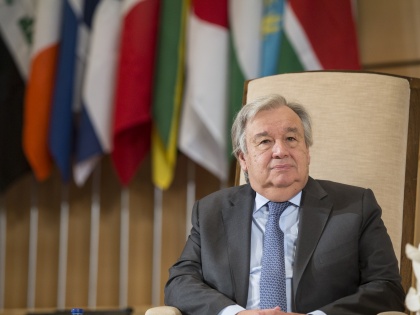Global public debt hit record $92 tn in 2022, warns UN
By IANS | Published: July 13, 2023 07:24 AM2023-07-13T07:24:28+5:302023-07-13T07:25:09+5:30
New York, July 13 UN Secretary-General Antonio Guterres has presented the report, "A world of debt. A growing ...

Global public debt hit record $92 tn in 2022, warns UN
New York, July 13 UN Secretary-General Antonio Guterres has presented the report, "A world of debt. A growing burden to global prosperity", and issued a grave warning as global public debt reached an all-time high of $92 trillion in 2022.
This five-fold surge in public debt levels since 2000, demands immediate action to tackle the escalating crisis affecting developing countries in particular.
Guterres stressed: "On average, African countries pay four times more for borrowing than the US and eight times more than the wealthiest European economies."
"A total of 52 countries, almost 40 per cent of the developing world, are in serious debt trouble."
This disparity in interest rates highlights the inherent inequality in the international financial system, burdening developing countries disproportionately.
Today, half of all developing nations spend a minimum of 7.4 per cent of their export revenues on servicing external public debt.
Of special concern is the rapid growth of interest payments, surpassing other public expenditures. It is alarming that some governments are compelled to spend more on servicing debt than on critical sectors like health and education.
Disturbingly, the report shows that at least 19 developing nations allocate more money to interest payments than education, and 45 allocate more to interest than health expenditure.
The increasing reliance on private creditors, who offer more expensive debt and shorter maturities than official sources, has also complicated debt restructuring for developing countries.
At present, private creditors hold 62 per cent of external public debt, up from 47 per cent a decade ago. There is, however, no mechanism to address how to restructure debt across different creditor classes.
The UN urgently calls for a comprehensive reform of the International Financial Architecture, including the debt architecture, to foster a more inclusive system that empowers developing countries to actively participate in the governance of the international financial system.
Addressing the high cost of debt and the mounting risk of debt distress is of utmost importance. Establishing a debt workout mechanism is crucial to expedite progress under the G20 Common Framework for Debt Treatment, which has faced challenges due to creditor coordination issues and the absence of automatic debt service suspension clauses.
Developing countries, especially those with high debt burdens, require increased liquidity during times of crisis. Otherwise, a liquidity crisis risks turning into a debt crisis. This can be achieved by expanding contingency finance.
The global safety net must work. Measures such as enhancing the use of Special Drawing Rights, temporarily suspending IMF surcharges, and broadening access to emergency financing through increased quotas must be pursued.
A substantial increase in affordable long-term financing is also required. To get there, the world will need to transform and expand Multilateral Development Banks to support sustainable long-term development and mobilise more private resources on more equitable terms.
Additionally, there is an urgent need for more concessional finance to fulfill aid and climate finance commitments.
Disclaimer: This post has been auto-published from an agency feed without any modifications to the text and has not been reviewed by an editor
Open in app